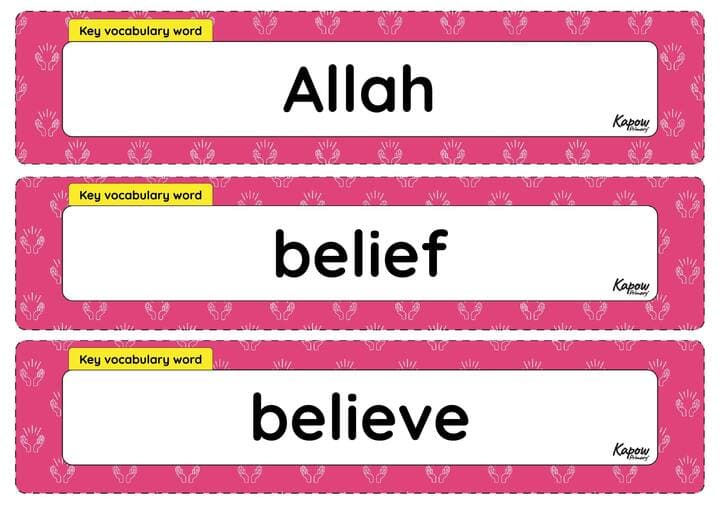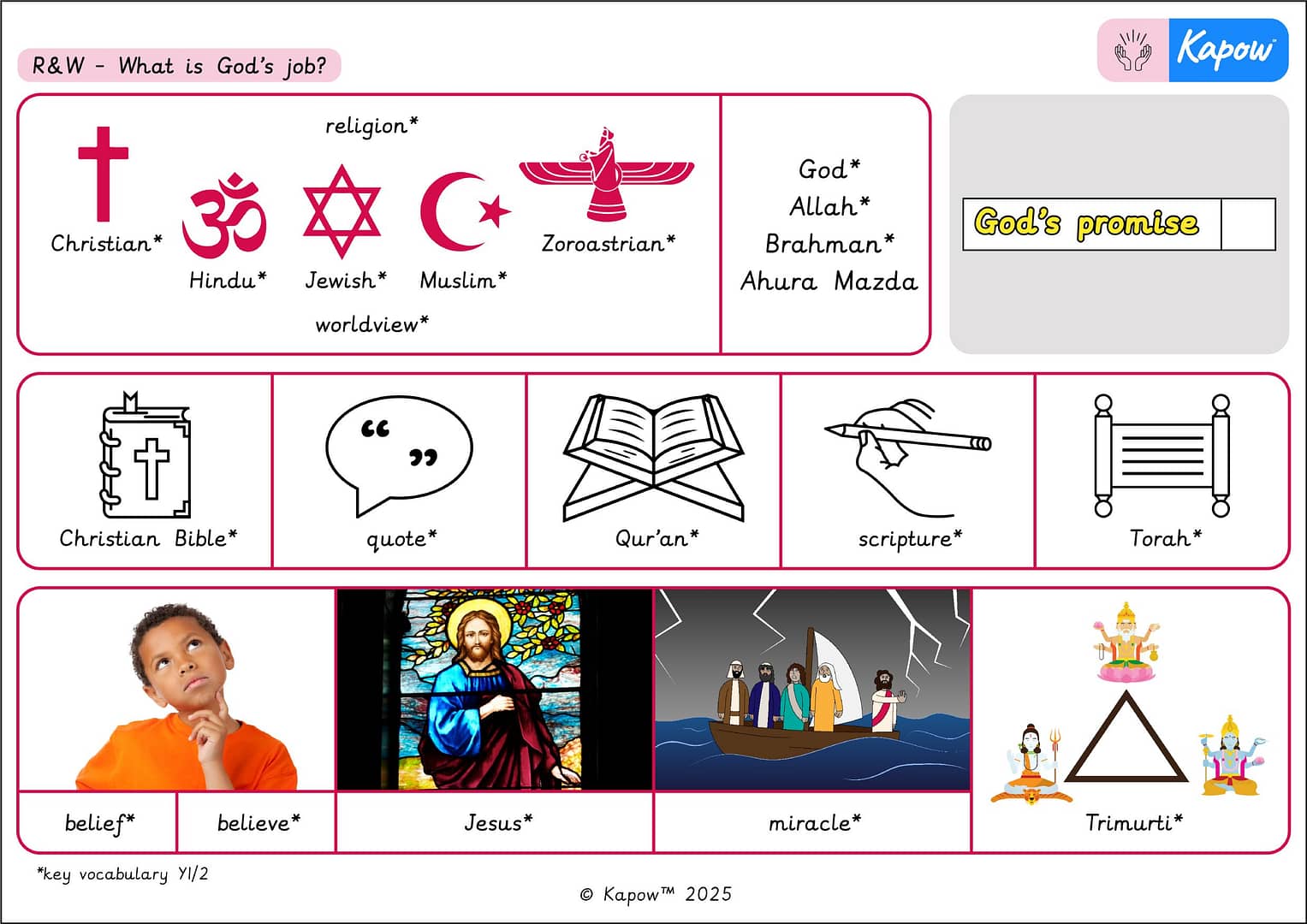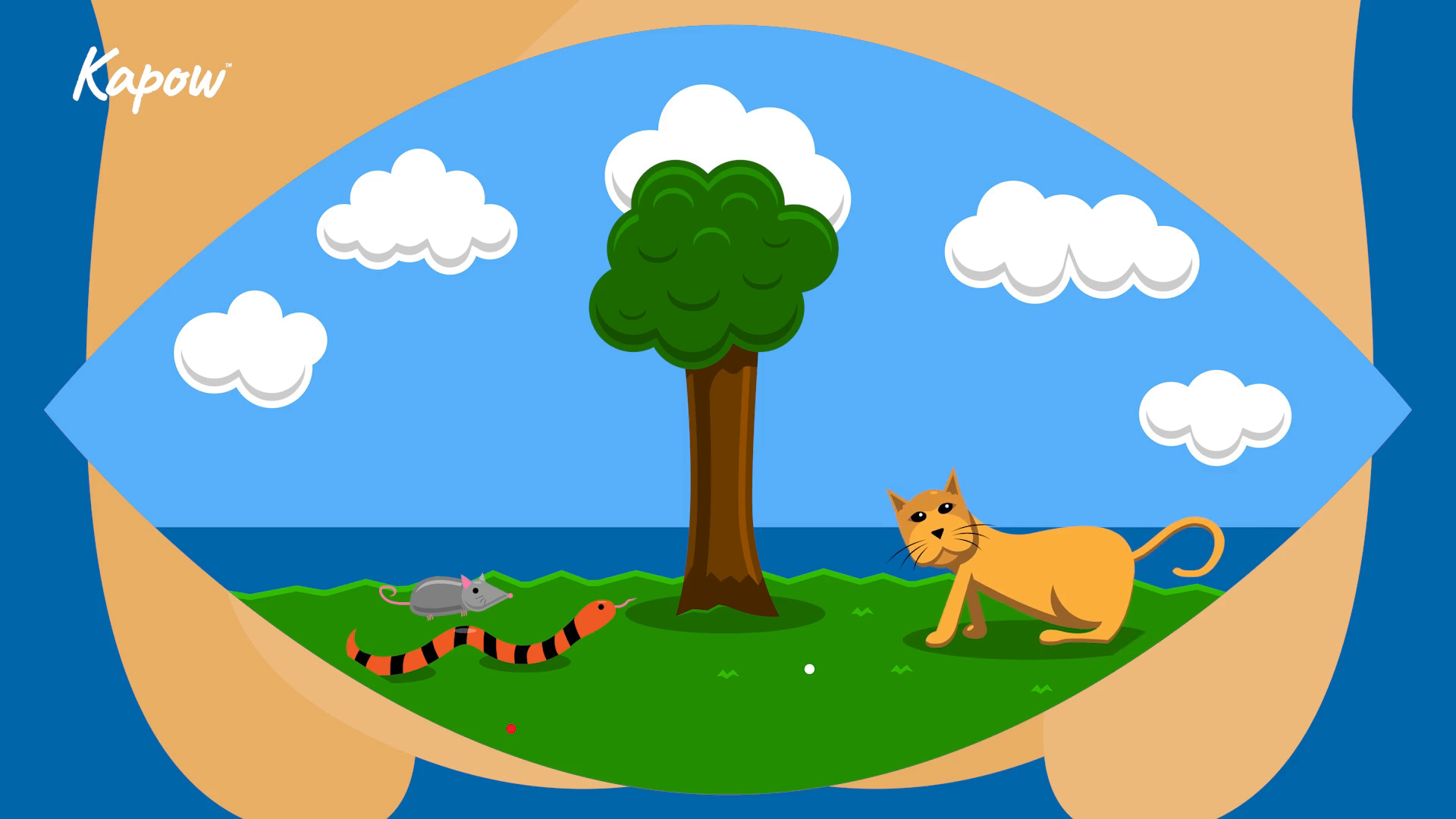year: Year 1
How does Kapow Primary do sustainability?
Demo videos in Design & Technology
Demo videos in Art & Design
Teacher overview video: Remembrance
This video introduces teachers to Kapow Primary’s Whole school Remembrance collection, ensuring teachers feel prepared to guide children in learning about remembrance with sensitivity and purpose.
Teacher video: Y1/2 (B): What is God’s job?
This Religion and worldviews video supports the What is God’s job? unit, helping children explore what different people believe about God’s role.
Vocabulary display – R&W Y1/2 (B): What is God’s job?
Knowledge organiser – R&W Y1/2 (B): What is God’s job?
Pupil video: The Hindu creation story
This Religion and worldviews video introduces children to the Hindu creation story.









